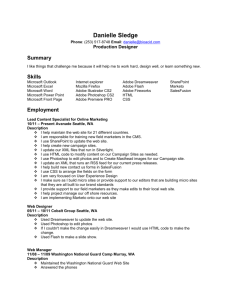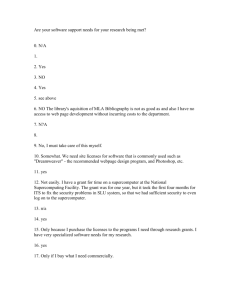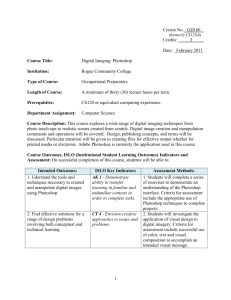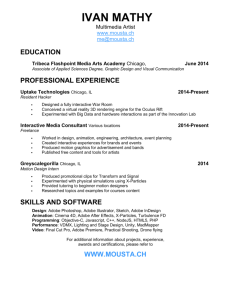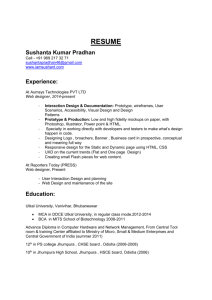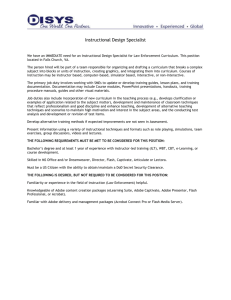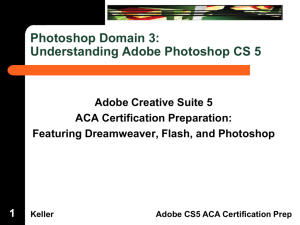SAMPLE COURSE OF STUDY OUTLINE
advertisement
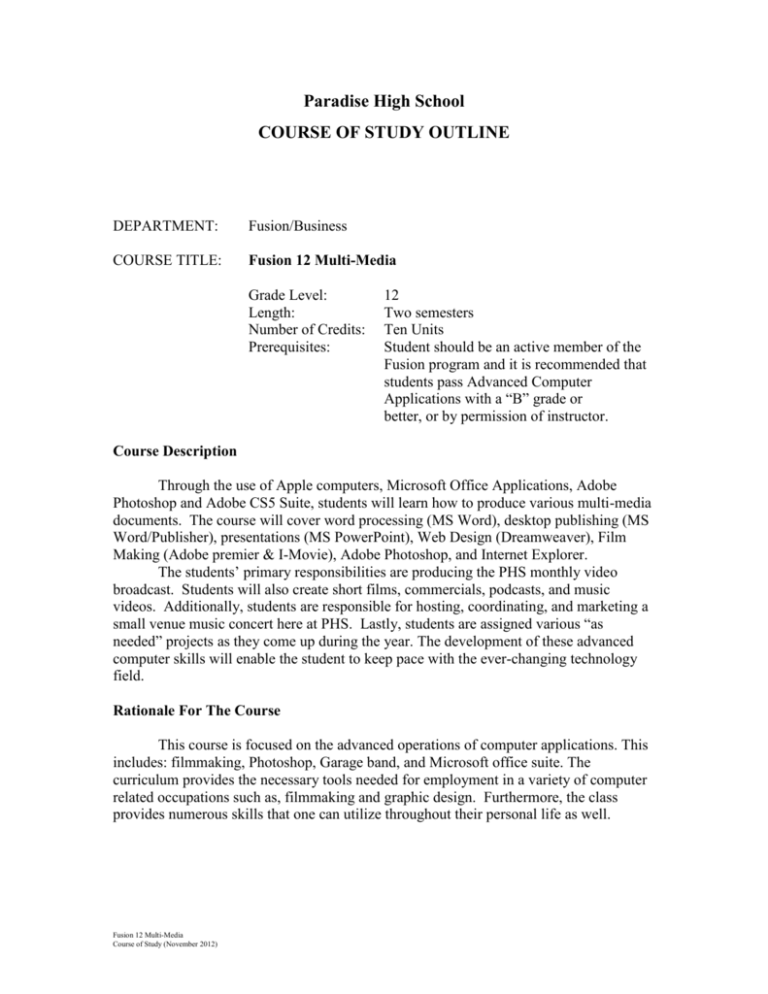
Paradise High School COURSE OF STUDY OUTLINE DEPARTMENT: Fusion/Business COURSE TITLE: Fusion 12 Multi-Media Grade Level: Length: Number of Credits: Prerequisites: 12 Two semesters Ten Units Student should be an active member of the Fusion program and it is recommended that students pass Advanced Computer Applications with a “B” grade or better, or by permission of instructor. Course Description Through the use of Apple computers, Microsoft Office Applications, Adobe Photoshop and Adobe CS5 Suite, students will learn how to produce various multi-media documents. The course will cover word processing (MS Word), desktop publishing (MS Word/Publisher), presentations (MS PowerPoint), Web Design (Dreamweaver), Film Making (Adobe premier & I-Movie), Adobe Photoshop, and Internet Explorer. The students’ primary responsibilities are producing the PHS monthly video broadcast. Students will also create short films, commercials, podcasts, and music videos. Additionally, students are responsible for hosting, coordinating, and marketing a small venue music concert here at PHS. Lastly, students are assigned various “as needed” projects as they come up during the year. The development of these advanced computer skills will enable the student to keep pace with the ever-changing technology field. Rationale For The Course This course is focused on the advanced operations of computer applications. This includes: filmmaking, Photoshop, Garage band, and Microsoft office suite. The curriculum provides the necessary tools needed for employment in a variety of computer related occupations such as, filmmaking and graphic design. Furthermore, the class provides numerous skills that one can utilize throughout their personal life as well. Fusion 12 Multi-Media Course of Study (November 2012) ESLRs Emphasized in Course Respectful …of self, others, school, and environment. Informed …through finding, evaluating, and using information from a variety of sources. Safe …personally, emotionally, and physically. Excellent …in order to reach high levels of educational and academic success for all. United …by understanding and honoring individual differences to work toward a common goal. Purposeful …through engagement in learning and working towards a personal vision for the future. Course Outline – Goals, Standards, Student Performance Objectives Students will learn how to efficiently utilize Microsoft Office 2007(MS Word, Publisher, and PowerPoint). Students will know how to build and design their own web sites using Dreamweaver and/or HTML code. Students will organize, market, and produce a small-scale concert. Students will develop and enhance their organizational skills. Students will obtain a basic understanding and functional use of Adobe Photoshop software. Students will develop advanced filmmaking skills and be able to effectively use the Apple I-movie program and Adobe Premiere CS5 Suite. Suggested Teaching Strategies I. II. III. IV. V. VI. Lecture Cooperative learning groups Lab investigations Student explanations and presentations Modeling Peer tutoring Assessments I. II. III. IV. Oral questions/answers Written quizzes and examinations Video projects Pre- and post- tests Fusion 12 Multi-Media Course of Study (November 2012) 2 Resources Adobe Premier CS5 Suite Adobe Pro-Premier Microsoft Office 2007 Textbooks: Project Photoshop. Gertler, Nat, 2003 Technology Foundation Standards for All Students The technology foundation standards for students are divided into six broad categories. Standards within each category are to be introduced, reinforced, and mastered by students. These categories provide a framework for linking performance indicators within the Profiles for Technology Literate Students to the standards. Teachers can use these standards and profiles as guidelines for planning technology-based activities in which students achieve success in learning, communication, and life skills. Technology Foundation Standards for Students 1 Basic operations and concepts Students demonstrate a sound understanding of the nature and operation of technology systems. Students are proficient in the use of technology. 2 Social, ethical, and human issues Students understand the ethical, cultural, and societal issues related to technology. Students practice responsible use of technology systems, information, and software. Students develop positive attitudes toward technology uses that support lifelong learning, collaboration, personal pursuits, and productivity. 3 Technology productivity tools Students use technology tools to enhance learning, increase productivity, and promote creativity. Students use productivity tools to collaborate in constructing technologyenhanced models, prepare publications, and produce other creative works. 4 Technology communications tools Students use telecommunications to collaborate, publish, and interact with peers, experts, and other audiences. Students use a variety of media and formats to communicate information and ideas effectively to multiple audiences. 5 Technology research tools Students use technology to locate, evaluate, and collect information from a variety of sources. Fusion 12 Multi-Media Course of Study (November 2012) 3 Students use technology tools to process data and report results. Students evaluate and select new information resources and technological innovations based on the appropriateness for specific tasks. 6 Technology problem-solving and decision-making tools Students use technology resources for solving problems and making informed decisions. Students employ technology in the development of strategies for solving problems in the real world. Facilities Required Course is taught in a fully functional computer lab Includes – Computer, Monitor, Keyboard, Mouse, Networked Printer, Internet Access for each computer station, Software, Smart Board with projector Fusion 12 Multi-Media Course of Study (November 2012) 4
